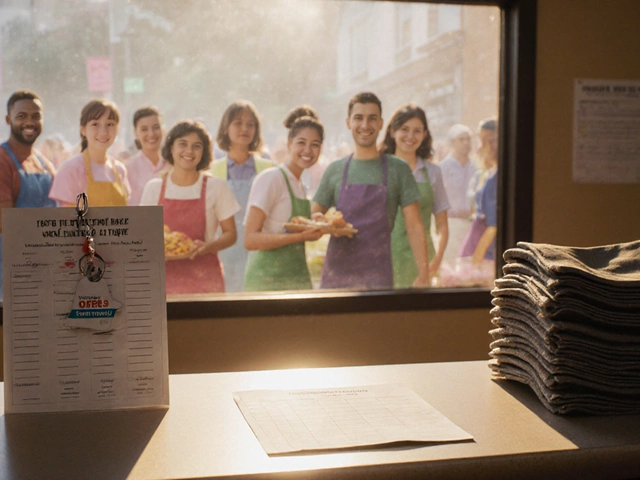Picture a lunchroom where someone’s introducing the new Science Fiction Book Club, there’s a buzz around the Art Collective, and a group of friends just launched their own Coding Circle. Some clubs kick off with a bang but then quietly vanish, while others stick around for years and become school traditions. Ever wondered what makes the difference? The secret isn’t in some genius idea or random luck—it’s all about clarity, energy, and the right small moves that make people want to join and stay. This isn’t just about having the coolest posters (though that helps). It’s knowing why your club needs to exist, how to get people excited, and how to keep things rolling even when life gets in the way. If you want your club to actually matter, not just on paper, but for real people, you’re starting in the right place.
Finding Your Purpose and Niche: The Birth of a Club That Matters
It starts with one spark. Maybe it’s sitting in math class, realizing no one’s running a board game night anymore. Or seeing how there’s already a Debate Club, but nothing for people obsessed with chess, or anime, or environmental activism. Here’s your first mission: figure out exactly what stirs you up and check if there’s a gap that cries out to be filled. It’s tempting to make something extremely broad—like "The Everything Club"—but that’s usually an express ticket to nowhere, because people need a reason to care. School club success depends on a specific purpose.
So, where do you start? Some students just run with what already fires them up, like robotics or poetry. Try to pinpoint: does your school have a passionate group that needs a home? Sometimes, if there’s nothing like what you want, that’s a green light to invent something brand new. But before you go wild, do your homework. Some school districts keep official records of clubs, and teachers usually know what’s fizzled out or thrived in past years. The National Secondary School Principals Association found in 2023 that clubs tied to student interests were three times as likely to last past a single semester. That means research isn’t busywork—it’s a serious shortcut.
Once you’ve found your thing, narrow it down: is it just for beginners or advanced folks? Will you meet every week or just before big events? Make a quick vision statement—one that anyone can understand in about ten seconds. Imagine you’re explaining it on the bus or pitching to a teacher in the hallway. If people look confused, tweak it until they get it. Next, check school policies. Most schools have a club approval process that could involve a charter, a club constitution, or a teacher sponsor. It’s not as scary as it sounds—almost every successful founder started by walking into the main office and asking for the basic steps. For example, some schools in Texas require a charter “explaining the purpose, leadership roles, and meeting plans” as well as staff sponsorship. Others care more about making sure clubs are inclusive. Documents can sound official, but think of them as guides to keep your club on track.
Let’s talk timing. If you pitch your idea during finals week, good luck finding volunteers. Calendar timing matters. Most established clubs launch at the start of the semester, riding the wave of student energy instead of scrambling against school events, sports seasons, or holidays. Try using Google Forms to gauge interest. Send out a short poll (literally, five questions max) via group chats or the school’s email newsletter. Ask things like "What meeting times work for you?" or "Would you join a club like this?" This does two things: it helps you avoid launching into thin air, and it also gives you a list of potential members who’ve said, “I’m in.” That’s real data, and it helps when you pitch to staff or the approval board.
Sometimes you’ll find that someone else tried your idea last year and it flopped; that’s not an automatic stop sign. Reach out to a former member or faculty advisor and just ask: “What worked, and what killed it?” Sometimes it was just timing, sometimes no one knew about it. If there was a rules issue or a bad club atmosphere, tweak your model. One student at Maple Ridge High revived their long-gone Creative Writing Club by setting up Instagram prompts and low-pressure meet-ups in the library. By keeping things chill and using input from past failures, they added 18 new members in one month.

Building a Team and Launching: The Power of People and Recruitment
No one runs a thriving club solo—unless you plan on chatting with yourself over pizza for months. Building your founding squad is non-negotiable. This is your chance to spot who’s genuinely interested and who brings energy, not just impressive resumes. Don’t fall for the "big names" trap—sometimes the real magic lies in the quieter students who just really care. Strong clubs usually start with three to seven committed people. Look for builders (people who help organize), connectors (those who know everyone), and a reliable adult sponsor. A University of Michigan survey from 2022 found that clubs with at least three dedicated core members saw 60% higher event turnout than those started by a single founder. Balance matters.
Next, craft your launch. Start with a club meeting that’s way more fun than just listing rules. First impressions count, so don’t lecture. Try snacks, a quirky activity, or a low-stakes get-to-know-you game. If you’re building a STEM club, set up a mini contest or hands-on demo. Running a language club? Sample snacks from countries that speak the language. Want your club to leave a mark? Grab free space at school events, stick up colorful flyers with QR codes for sign-ups, and let word of mouth do its job in student group chats.
Recruitment isn’t just numbers—it’s about the right mix of people. Don’t target only your friends or one grade level. Smart club founders reach out directly to people who aren’t like them but still click with the club’s vibe. This avoids a clique and keeps things fresh. Offer bite-size roles so new members don’t have to dive headfirst into planning a huge event. Maybe someone is shy but great at graphic design, or nervous to lead but loves running social media. Once people see there’s a spot for every strength, you’ll find more are willing to get involved.
Here’s a quick recruitment checklist:
- Draft a killer description: one sentence plus your unique edge.
- Make simple signup forms (Google Forms or paper slips at school lunch work great).
- Offer a "Bring-a-friend" meeting (bonus: food and music draw crowds, always).
- Use your school website, PA system, and Instagram. Tag relevant hashtags, join Facebook parent or community groups if allowed.
- Do a mini demo or leave a display during bigger school events—think open house, sports playoff nights, or club fairs.
Keep your meetings moving. Those first few meetups, stick to short agendas, interactive stuff, or group brainstorming. Assign “snack captain” or “ice breaker host.” A Rutgers University observation in 2023 found that clubs with regular activities and rotating roles grew twice as fast as those that stuck to one leader running all the meetings. Variety nearly always fuels engagement.
If you hit a snag with low turnout, you’re not alone (seriously, most clubs see a 50% drop-off after the first meeting). Here’s where urgency matters: shoot reminders, share recap photos, and celebrate wins—even tiny ones. Some clubs post a “member of the week” or share anonymous thank-yous. Texting or DM-ing people right after meetings keeps momentum way more than a mass email, because it feels personal. Make your club the one people buzz about in the hallway, not just on the announcements page.
| Step | What to Do | Suggested Tools |
|---|---|---|
| 1 | Find your core members/roles | Group chats (WhatsApp, Discord), Study hall invites |
| 2 | Draft club mission, submit school paperwork | Google Docs, sample charters |
| 3 | Advertise, recruit, host your launch | Flyers, Instagram, QR signups, snack sign-in |
| 4 | Keep up regular, fun meetings and follow-ups | Reminders (Remind, text), photo recaps |
Launches that grab attention go beyond the basics. One high school in Oregon held a "speed-friending" event for its new International Club, matching up people with different backgrounds just for fun. They doubled their member list in two weeks. Don’t be afraid to get a bit silly, take photos, and make memories early—people remember great energy more than perfect organization in those early days.

Running and Growing: Sustainability, Impact, and Making a Club Unforgettable
So your club has members, but will it thrive beyond the honeymoon phase? Now’s the real test. Consistency is your hidden superpower. Meeting regularly (even during busy seasons) keeps everyone feeling included and helps new routines take hold. Aim for weekly or biweekly meetups. But don’t just go through the motions—switch things up every few meetings so people don’t get bored.
Agendas matter, but don’t let them kill fun. Power tip: Assign roles for note-taking, timekeeping, and snack duty so nobody gets burned out. Even silly titles like "Chief Meme Officer" or "Playlist Curator" help distribute the load. Rotate leadership so everyone gets a chance to step up. A survey from Edutopia in late 2024 showed clubs where leadership rotated saw up to 40% more members staying active through spring.
Plan events early. Whether it’s a fundraiser, contest, or school-wide celebration, big moments give everyone something to look forward to. Map out an event with roles split up: planner, decorator, social media lead, and budget helper. Get teachers involved—not just as chaperones but as actual partners or judges. Make it visible: post about your club’s wins, share photos, and celebrate progress.
Keep your finger on the pulse. If people skip two meetings in a row, check in—not with guilt, but with curiosity. “Hey, missed seeing you! Is there a better time or activity you’d love?” Sometimes it’s not you—it’s school schedules or work shifts. Adjust meeting times or try a poll again mid-year.
Don’t let conflicts fester. Disagreements will pop up, especially if your club draws different personalities together. Set a chill tone from the start—remind everyone it’s a club, not parliament. Quick check-ins, group votes, and light mediation keep things from getting dramatic. One tip: If things get tense, break for a shared club snack or have a silly icebreaker to reset the vibe.
Measure your impact, not just your numbers. If your Environmental Club convinces the cafeteria to swap to reusable trays even once a month, that’s a big win. A Film Club that finally screens a student-directed short? That’s legacy stuff. Jot down wins in a club journal or Google Drive. At the end of the year, sharing these stories—at assembly, in the yearbook, or on your socials—turns momentary efforts into inspiration for next year’s crew.
Sustainability hack: Recruit your replacement before you need one. The most enduring clubs are the ones where last year’s officers help train the next team. One school in Illinois set up a "shadow day" each spring where future leaders get to run a meeting before stepping up. This doubled their club continuation rates. Use that trick—invite newer members to test-drive officer roles whenever you can.
Boredom is often the enemy. Switch locations, test hybrid events, or swap club roles for a meeting. The most successful clubs let members vote on activities, host special guests, and even try field trips or friendly competitions with clubs at other schools (Zoom makes this way easier now). The trick is to always ask: What would make next month’s meeting worth showing up for?
Finally, remember: The most unforgettable school clubs aren’t just bullet points on college apps. They shift your daily life a little, spark new friendships, and sometimes even stick with you forever. At the end of the year, take a photo, write down a few highlights, and thank everyone—funny awards, silly certificates, or just a round of shout-outs. The best school clubs become stories people retell for years, not just another after-school obligation.





